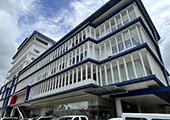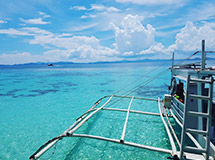
-
МјРЇСІИёСЖШИМі
-
 Malacañang Palace-Official Residence of the Pres
Malacañang Palace-Official Residence of the Pres 139,177
139,177 -
 Amana Water Park
Amana Water Park 115,793
115,793 -
 IFUGAO TRIBE
IFUGAO TRIBE 109,837
109,837 -
 Santacruzan-The Queen of all Filipino Festivals109,628
Santacruzan-The Queen of all Filipino Festivals109,628 -
 Water Refilling Station: an alternative source of drink107,906
Water Refilling Station: an alternative source of drink107,906 -
 LAMBANOG-THE POOR MAN\'S DRINK105,018
LAMBANOG-THE POOR MAN\'S DRINK105,018 -
 Christmas Parol [lantern in English]104,740
Christmas Parol [lantern in English]104,740 -
 HANGING RICE97,437
HANGING RICE97,437 -
 Taoist Temple94,320
Taoist Temple94,320 -
 Corn Fields in the Philippines90,800
Corn Fields in the Philippines90,800
The Philippine ЁЎCalesaЁЏ
Philippine ЁЎCalesaЁЏ or ЁАKalesaЁБ (sometimes called a karitela) is a carriage being pulled by a horse. This was one of the modes of transportation introduced in the Philippines in the 18th century by the Spaniards that only nobles and high ranked officials could afford. Philippine ЁЎCalesaЁЏ considered as one of the oldest mode of transportaion in our country, of which our ancestors love to ride viewing the beautiful scenic spots.
Calesa flourished most to Big Spanish Cities before, such as Ciudad de Cebú (Cebu, 1571), Manila, Nueva Segovia (Lal-lo, year 1595), La Ciudad de Cáceres (Naga,year 1575). The Kalesas can also be found in Intramuros and Binondo in the city of Manila and also in Iligan City, which has a street where decorated kalesas can be taken for a ride. In Cagayan, kalesas are common, especially in Tuao and many other municipalities. In Tuguegarao City, they are mixed in traffic with private cars, motorcycles, sidecar motorcycles, jeepneys, trucks, and bicycles.
The ЁАCalesaЁБ is designed with Filipino style decorated with some Philippine stuffs and painted with some of the Philippine beautiful scenery. It consist of wooden cart or carriage and a single or couple of horse/s. A kalesa looks like an inclined cart. It has two round wheels on each side and two rows of seats that can accommodate four persons. The driver sits on a block of wood located at the front of the cart near the horse.
The driver is commonly called as ЁАCocheroЁБ or ЁАKutseroЁА, driving without license. My grandfather is a former Kalesa driver, he who introduces and let me experience the life riding on the ЁЎCalesaЁЏ on my childhood days. I often see him with ЁАsumbreroЁБ or hat, t-shirt, and long pants. He also reins the horse with some words, when he direct the horse to turn right he say ЁАmanoЁБ and he say ЁАsillaЁБ to direct the horse to turn left.
Today, our Philippine ЁЎCalesaЁЏ still survives despite of the fact that our cities and municipalities are flocked with steel auto cars.

- ЁЄ
- ЁЄSalapan Festival
- ЁЄEmpanada Festival (Batac City)
- ЁЄPADUL-ONG FESTIVAL
- ЁЄKaumahan Festival in Barili
- ЁЄKAGASANGAN FESTIVAL
- ЁЄLalin Festival in Asturias
- ЁЄTinabuay Festival
- ЁЄGayon Bicol Festival
- ЁЄPINYASAN FESTIVAL in CAMARINES
- ЁЄMAGAYON FESTIVAL
- ЁЄBANAUAN FESTIVAL (BARANGAY.GUA
- ЁЄThe Tuna Festival in Gensan
- ЁЄPINTOS FESTIVAL BOGO CITY, CEB
- ЁЄPanaad sa Negros



- ЁЄ
- ЁЄ
- ЁЄCEBU WESTOWN LAGOON
- ЁЄGREEN LAGOON, COMPOSTELA
- ЁЄCALLAO CAVE
- ЁЄMOUNT PINATUBO IN PHILIPPINES
- ЁЄBATAN ISLAND in Batanes.
- ЁЄCALAGUAS ISLAND, CAMARINES NOR
- ЁЄAGHO ISLAND
- ЁЄCARAMOAN ISLAND IN CAMARINES S
- ЁЄSAMBAWAN ISLAND
- ЁЄPLACES TO VISIT IN LANAO DEL N
- ЁЄPLACES TO VISIT IN ZAMBOANGA C
- ЁЄPlaces to visit in Rizal Provi
- ЁЄHISTORIC TOWN OF VIGAN CITY, I













 ЧЪРкДхФФ ОпАЃЛѓДу ПРЧТ
ЧЪРкДхФФ ОпАЃЛѓДу ПРЧТ 12ГтПЌМг МвКёРкИИСЗ 1РЇ
12ГтПЌМг МвКёРкИИСЗ 1РЇ
 ГЛАд ИТДТ ОюЧаПј УЃБт
ГЛАд ИТДТ ОюЧаПј УЃБт
 ИЎОѓ ЧаБГ ЙцЙЎБт
ИЎОѓ ЧаБГ ЙцЙЎБт
 СжИЛПЁ ГЛАЁ ОЕ КёПыРК?
СжИЛПЁ ГЛАЁ ОЕ КёПыРК? УжАэАЁМККё РЬКЅЦЎ СёБтБт
УжАэАЁМККё РЬКЅЦЎ СёБтБт
 ЧіСіПЁМЕЕ ЧЪРкДхФФ!
ЧіСіПЁМЕЕ ЧЪРкДхФФ! ЧіСіПЁМ АЁДЩЧб
ЧіСіПЁМ АЁДЩЧб









 ЧЪРк ЦЏБо Ч§ХУ! ФСНУОюСі МКёНК
ЧЪРк ЦЏБо Ч§ХУ! ФСНУОюСі МКёНК




































